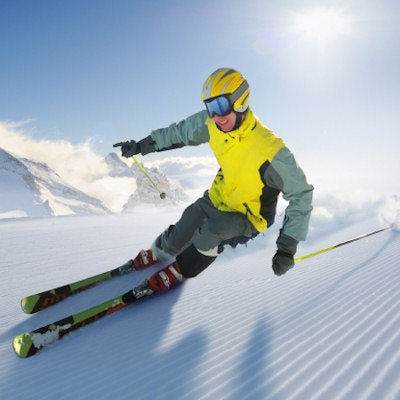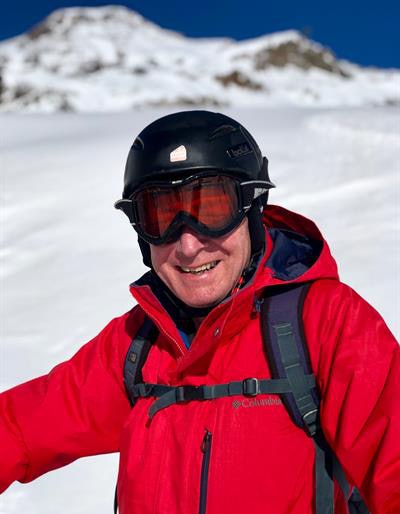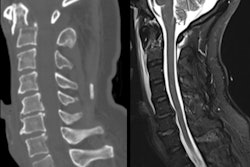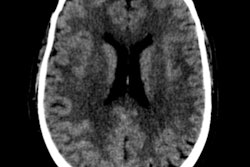
How do you get through the winter? It's a serious question for some of us in Northern Europe. Short, damp, foggy days and long, cold, dark nights can take their toll and have a strong impact on morale.
For some of us, the answer is to head to the mountains. At this time of year in our department, the conversation frequently turns to the prospects of a skiing holiday: Have you been yet? When are you going? What was the snow like? Any injuries?
When skiers start exchanging experiences, it isn't usually long before the word "avalanche" comes up. It is a sad fact that every winter a small number of fatalities occur in Europe as a result of avalanches, and these will always be widely reported in the press.
 Dr. Giles Maskell.
Dr. Giles Maskell.In the popular imagination, avalanches are capricious and unpredictable events -- a hangover perhaps from the times when demons were thought to inhabit the high mountains and inflict punishment on those mortals who dared to invade their kingdom. The truth is somewhat different. The physical factors that predispose to avalanche, including temperature, weather, slope, and snow conditions, are now quite well understood, and most avalanches are predictable. Also now better appreciated are the human factors that can lead skiers to take avoidable risks in dangerous conditions and so precipitate an event.
In an idle moment on a chairlift recently, I began to speculate on the parallels between skiing and radiology in this respect.
The most widely publicized framework used to consider the human factors involved in avalanche safety was developed by Ian McCammon, from the National Outdoor Leadership School in Lander, Wyoming, U.S.
He identified a number of key heuristics, or cognitive shortcuts, to which humans tend to be prone and that can affect decision-making in risky environments, such as those encountered in off-piste or backcountry skiing. His framework goes by the acronym FACETS.
Let's consider each aspect of this approach with respect to both skiing and radiology. The parallels are often more readily apparent when we consider interventional practice -- where the risks are more obvious -- rather than diagnostic radiology, but I will use examples from both in the points below:
- Familiarity: Whether skiing, intervening, or reporting on medical images, the familiarity heuristic leads us to repeat certain patterns of behavior when we find ourselves in a familiar setting; rather than go to the trouble of working out the right course of action every time, we simply behave as we always have in that setting. Skiers tend to make riskier decisions when in familiar terrain than they do in unfamiliar terrain.
Most of us can probably recall finding ourselves using a familiar form of words to describe an image when, in retrospect, those words turned out not to be entirely appropriate. The majority of fatal avalanche accidents occur on slopes with which the skier is already familiar, and I dare say that the majority of errors in my reporting occur in common types of study. - Acceptance: The phenomenon of acceptance in this context describes our tendency to engage in activities that we think will get us noticed or accepted by people we like or respect, or whom we want to like or respect us. On the ski slopes, this is felt to account for the fact that all-male parties of skiers are found to engage in less risky behaviors than parties that include a mix of men and women. I wouldn't want to speculate on the impact of the mix of sexes in radiology reporting accuracy, other than to observe that as in any workplace, interactions between the sexes can have either positive or negative effects!
I have certainly seen the acceptance phenomenon at work in interventional radiology, prompting a radiologist -- probably without being aware of it -- to allow considerations of future publication or presentation possibilities to influence decisions as to whether to proceed with a risky procedure. - Commitment: Parties that are heavily committed to a specific goal are more likely to take risky decisions. This has been responsible for many disasters in skiing and mountaineering: "We've put so much effort into getting this far that we're not going to turn back now." The corresponding thought processes in interventional radiology are not hard to imagine -- "I'll get across this stricture if it's the last thing I do" might be one example.
I have reason myself to be extremely grateful to a French mountain guide who aborted a ski touring expedition in which I was involved a couple of years ago, recognizing that the prevailing conditions were too dangerous. The ability to recognize the point at which the likelihood of achieving the original objective has diminished to the point at which the risks involved are unacceptable is a hallmark of the very best surgeons and interventional radiologists. - Expert halo: The halo phenomenon describes the irrational faith that we sometimes place in certain individuals who inspire confidence, regardless of their actual expertise. When a party of skiers includes an identifiable leader or particularly strong personality, the rest of the group is likely to devolve decision-making to that individual -- whether or not the person truly possesses relevant expertise -- and riskier decisions can result. If we like or admire someone, we are more likely to attribute abilities to them that seem important in the circumstances, whether or not that faith is justified.
I think this situation can sometimes occur in radiology reporting when reviewing previous images and reports; "if Professor X called this a metastasis, then I'll just go along with her view rather than re-evaluating the lesion for myself." - Tracks: Skiers are known to take risks when they perceive that an opportunity is rare and may be stolen by a rival or competitor; "powder fever" is a well-known phenomenon when skiers are known to take extra risks in pursuit of the thrills that come from making fresh tracks in new snow.
It's a little harder to see how this applies in radiology practice, but there is a long history in science of researchers taking shortcuts in pursuit of a research objective when they know that they are competing with others in the same field. - Social facilitation: The presence of other people enhances or attenuates risk-taking behavior, depending on the subject's level of confidence in his or her own skills. Good skiers tend to ski their best when they know that others are watching.
I have a hunch that some radiologists are more prone to suggesting esoteric diagnoses in front of a crowd in the context of a tumor board or multidisciplinary team meeting than when compelled to commit their opinion to print in the privacy of the reporting room. I have certainly been guilty of this myself on occasions -- once or twice, I have even been correct!
One of the most compelling messages to come out of the research on the impact of human factors in avalanche safety is that training, although undoubtedly useful, is not in itself complete protection against making bad decisions. Well-trained, intelligent, sensible people can still be led astray by their own cognitive biases. That, I think, rings true as much for radiology as for winter sports.
If you are heading to the mountains this winter, I wish you an excellent holiday and a safe return!
Dr. Giles Maskell is a radiologist in Truro, U.K. He is a past president of the U.K. Royal College of Radiologists. Competing interests: None declared.
The comments and observations expressed herein do not necessarily reflect the opinions of AuntMinnieEurope.com, nor should they be construed as an endorsement or admonishment of any particular vendor, analyst, industry consultant, or consulting group.



















